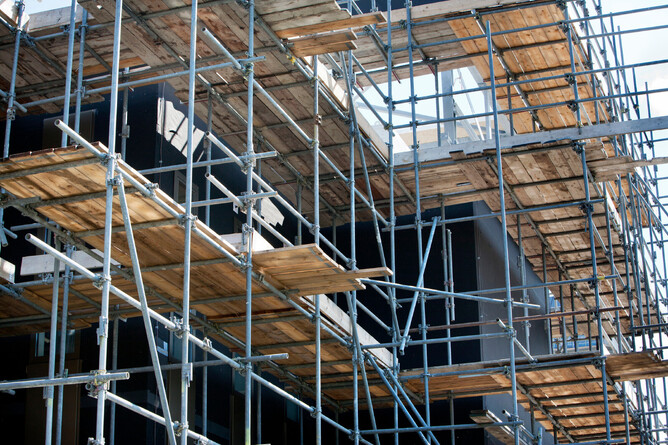Scaffolding systems are essential to most construction projects across New Zealand, but they’re not always invulnerable. The worse that the weather is, the more even we – scaffolding specialists at King Kong Scaffold – would recommend pausing a construction project, and using the scaffold only when the weather calms down once more. That is to say, weather does affect your scaffolding and in many ways, such as the following:
1. Rain affects a scaffold’s safety and stability
Whilst scaffolds can be used in the rain with the proper protective coverings and measures, heavy rainfall makes your scaffold slippery. This decreases the safety and stability of your scaffolding structure, and increases the risk of slips and falls amongst workers. Such hazards are unacceptable when working at height, and should always be avoided.
Additionally, wet conditions also lead to greater water accumulation, which causes the wood planks often used in scaffolding systems to swell, weakening them over time. To mitigate this, we advise wearing non-slip shoes, using non-slip materials during a project, and inspecting for proper drainage across your scaffold during wet periods to ensure it remains as safe as possible.
2. Wind can destabilise a scaffold’s structure
Strong winds are perhaps even more impactful on a scaffold’s structure than rain is. Strong gusts of wind may completely destabilise your scaffold’s structure, making it sway precariously and collapse. Tall scaffolds with large, exposed surface areas are particularly susceptible to the wind. As a result, scaffolding should always be anchored securely to the building under construction, with additional braces and ties if powerful winds are forecasted. Indeed, work schedules should always be adjusted according to weather forecasts, to make sure that workers remain safe.
3. Weather that’s too hot can cause metal to expand, potentially impacting a scaffold
Even sunny weather can be detrimental to the quality of your scaffolding system.
Extreme heat and direct sunlight are known to warp and cause metal to expand, which affects the integrity of your scaffolding system. Prolonged exposure to strong UV light can also weaken and degrade the structure over time. Always choose weather-resistant materials when it comes to investing in a scaffolding system for your construction project; they can withstand the most powerful UV exposure, preserving the structure of your scaffold.
Nevertheless, the best time to make use of a scaffold is in temperate, dry weather. This ensures a seamless, safe and compliant construction process.
Across Porirua and wider Wellington, King Kong Scaffold provide the finest scaffolding installations to domestic and light commercial sites that require them. Our scaffold hire service is dependable, transparent in cost, and able to withstand different weather conditions. For more information about scaffold hire with us, contact a member of our team today.



